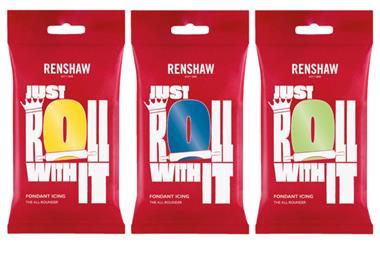Ben Evans, associate and chartered trade mark attorney at law firm Blake Morgan, walks us through the trade mark process and the importance of protecting your business’ identity
Of all the decisions to be made when establishing a business, choosing a name is among the hardest and most important.
Food businesses are rightly protective of their chosen name, often having worked hard to find one that makes them easily identifiable and sets them apart from competitors.
Trade marks exist to ensure no customer can confuse one business with another. High-profile trade mark cases – such as Starbucks taking a Texan bar owner to court over a beer he brewed and sold named Star Bock – underline how vital a name is in any firm’s competitive advantage.
So how does a firm go about registering and protecting its name or branding?
In simple terms, a trade mark is any sign (or ‘mark’) you use, such as your business or brand name or logo, to distinguish your goods or services from those of other businesses in your line of work. A trade mark is often a word or words, an image – or a combination of these. However, colours, shapes, sounds and smells could all be trade marks.
The first step, particularly with new brands, is to carry out a search in order to identify whether there are any conflicting marks already in existence. This will ensure you don’t get stung with a cease and desist letter as soon as you launch.
My advice is always to speak to an intellectual property (IP) lawyer at this stage and get them to conduct the search for you. They will charge, but this is money well spent, particularly if issues are identified.
If you get the green light from the search, then you can register your trade mark at the Intellectual Property Office (IPO) – a process that means obtaining an exclusive right to use it for the kind of goods and services specified in that particular registration.
The registration process, which usually takes around four months, will involve an examination phase where the IPO checks to ensure the mark is distinctive and, after that, the application will be advertised so that anyone else claiming rights has an opportunity to raise an objection.
Once registered, businesses are able to use the symbol whenever they use their trade mark to show it is protected. Registration lasts for 10 years and may be renewed indefinitely.
%%Quote_10%%
I would advise business owners to review their trade marks regularly. If you have updated any aspects of your branding or added new goods or services, you may need to file new applications.
It is also advised to ensure your business and contact details are up to date with the IPO – in case they need to contact you about a potentially conflicting application.
Several steps can be taken if you believe another business is infringing your trade mark.
The simplest is to contact the business directly, explain who you are, what your rights are and ask them to stop. If that doesn’t work, the next step is likely to be a solicitor’s letter requiring them to cease and desist.
If the attempts at settling the matter through correspondence fail, legal action will be necessary but it is vital to take sound legal advice on the best course of action. Large companies with deep pockets could prove a difficult opponent and could result in a lengthy and costly court battle and, equally, smaller businesses may not have sufficient funding to pay up even if you do succeed at court. These are all issues your lawyer will discuss with you.
One concerning development is the emergence of ‘trade mark trolls’. Business owners cannot have missed domain name squatting, prevalent in the early noughties, but things have now moved on and we now find people filing applications to register generic words, or phrases, as trade marks or, more worryingly, simply copying the trade marks of existing brands.
Sometimes their motivations are unclear; often it’s a speculative exercise in the hope the trade mark, with associated logos and domain names, may be valuable enough to an existing or future business to fetch a good price.
Increasingly, businesses may want to consider investing in a ‘watch’ service. These monitor trade mark applications and can alert you of any that are of interest – meaning you get the opportunity to stop them before they really get started.
Ultimately, your business’ name is worth defending. In the digital economy, where the search engine and social media wield mighty power, the value of a few letters cannot be underestimated.



































No comments yet